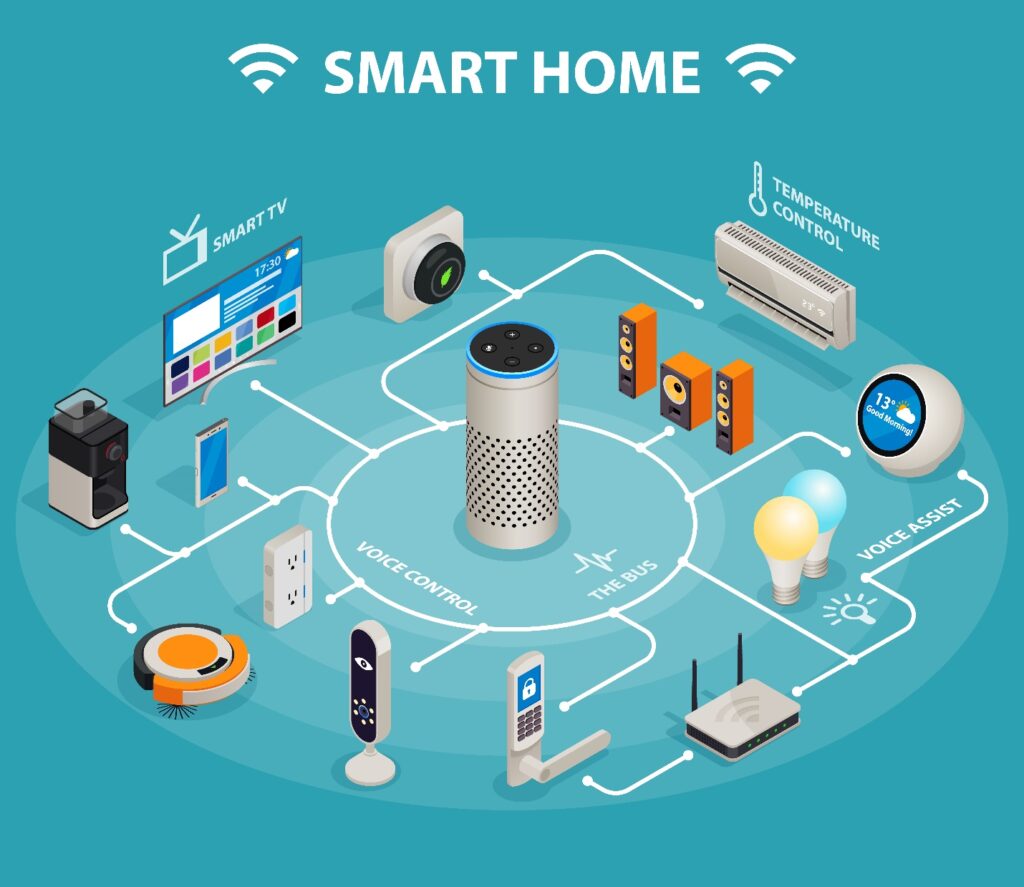The Impact of Semiconductors on IoT and Smart Device Technologies
Picture a scenario where your fridge orders fresh groceries on the verge of running out even before you notice it, or imagine a situation where the temperatures inside your apartment adjust to suit you as you are just getting back home from work. That’s not fiction; it is likely to happen and all thanks to semiconductors. These are the small parts that comprise IoT and smart devices which ultimately make our lives easier. The influence that semiconductors have in terms of IoT and smart device technologies is vast as well as revolutionary.
According to McKinsey Global Institute, IoT applications may generate global revenues between $4–$11 trillion by 2025. This growth poses critical opportunities and challenges for the semiconductor industry because semiconductors form an important part of this transformation.
These components could be minute like any other chips, but they power functionalities in IoT and smart devices. With the growing demand for connected devices, semiconductors have become more vital than ever before. It arouses curiosity to know what top semiconductor companies are working on and how can such small chips propel so much innovation? Below, we will look at how semiconductors interact with these smart devices to transform our daily lives.
Role of Semiconductors in IoT and Smart Devices
Semiconductors have electrical conductivity, which is somewhere between 10−6 to 104 ohm−1m−1. This property makes them ideal for controlling electric currents, which is why they are the foundation of modern electronics. In terms of IoT and smart devices, it’s the semiconductors that enable all those complex capabilities offered by such gadgets.
How Semiconductors Power IoT Devices?
Semiconductors are what lies underneath the IoT devices like mini-computers that can sense, analyze, and exchange information. This is what makes it possible to have an IOT device in a thermostat or fitness tracker.
They are used in the heart of IoT devices, which are microcontrollers and sensors. Collecting environmental data like temperature, motion, or light is done by sensors and this information is processed and acted upon by microcontrollers. The semiconductors powering these components guarantee power efficiency and wirelessness. This is achieved by the use of technologies like Bluetooth, WiFi, and ZigBee to enable always-on connectivity in the Internet of Things. To sum up, it would be a boring place if there were no IoT devices that continually apply semiconductors.
How Semiconductors Power Smart Device?
Smart home appliances smartphones, and other devices get their power from the usage of semiconductors. A smartphone or any other smart device should have powerful processors with multitasking capabilities. Semiconductor chips meant for use in smart devices are built to strike a balance between performance and energy efficiency. Designing semiconductors that deliver high processing power without draining the battery too quickly is the role of chip manufacturing companies.

The Role of Chips Manufacturing Companies in Advancing IoT
The top semiconductor companies design and develop advanced chips, whereas chip manufacturing companies actualize these designs into real-life systems. Semiconductor manufacturing happens in specialized facilities called fabrication plants or fabs, which undertake complex processes such as photolithography, doping, and etching to create tiny transistors comprising a semiconductor chip.
Today’s manufacturing process directly contributes to more miniaturized semiconductors that run faster while using less energy. Modern production techniques like extreme ultraviolet (EUV) lithography enable manufacturers to produce them as well so they can continue shrinking electronic gadgets while enhancing their performance.
Additionally, all along the world semiconductor industry are specializing in distinct areas while mastering the supply chain sector as well, e.g., Taiwan’s TSMC leads in semiconductor fabrication. At the same time, American and European countries dominate design expertise, respectively. This collaboration keeps pace with the rising demand for semiconductors used in IoT and smart-device applications since such demands are global.

The Future of Semiconductors in IoT and Smart Devices
IoT and smart devices continue to gain innovations as more advanced semiconductors come into play.
AI and Edge Computing
In IoT devices with AI (also known as “edge computing”), there is a growing need for heavy local computation. This eliminates the need to send data back and forth between cloud servers and results in fast decision-making by reducing latency. Top semiconductor companies are now making chips specifically for AI functions that can do this better than traditional silicon-based chips, thereby opening doors to smarter or intelligent IoT devices.
5G Connectivity
The advent of 5G networks is set to transform IoT with its faster and more reliable connections. Consequently, next-generation IoT gadgets will find numerous applications, including secure 5G enabled semiconductors for smart cities or autonomous cars.
Sustainability
Due to concerns about sustainability, the demand for energy-efficient semiconductors has risen. Innovative designs using new materials have resulted in low-power chips that deliver high performance. These chips make it possible to design different products, including battery-powered or remote area-specific IoT items.
Conclusion
We are at the threshold of a future that is advancing, and semiconductors continue to be the unsung heroes behind the IoT as well as smart devices. They have more than just a functional significance since they affect our engagement with each other and the world.
From smarter homes to industries that are more efficient, these technologies can revolutionize many aspects of our lives. Discover top semiconductor and chip manufacturing companies that are driving this technological revolution to look into the role semiconductors play in shaping our digital world today. Understand how they lead us towards a smart tomorrow and see how their inventions transform us today.

